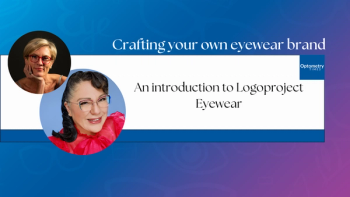
AOA 2023: Take a look into white dot syndrome
Roya Attar, OD, discussed, "White dot syndrome: More common than you think," which she will be presenting at AOA 2023 in Washington, DC.
Video transcript
Editor's note: This transcript has been lightly edited for clarity.
Emily Kaiser, Assistant Managing Editor:
Hi, everyone. I'm Emily Kaiser with Optometry Times and I'm sitting down with Dr Roya Attar, who is presenting a course entitled, "White dot syndrome: More common than you think," at Optometry's Meeting just hosted by the AOA in Washington, DC. Welcome, Dr. Attar. Thank you for taking the time to talk to us.
Roya Attar, OD:
Thank you for having me.
Kaiser:
Excited to have you here. So, first, can you give us a brief overview of your course?
Attar:
Okay. Well, as you mentioned, my course is titled, "White dots syndromes: More common than you think," and I will be presenting it with my colleague, Dr. Mohamed Rafieetary. In this presentation, we're going to discuss these diseases that you may see, which are collectively called syndromes, but they basically look like white dots or lesions in the retina. And, what to do when you see one of those because they are more common than you think, although still relatively rare. Furthermore, we'll discuss multimodal imaging, how to utilize that to evaluate and help with diagnosis of these patients, [and] any appropriate lab work that must be done. Then, importantly, how to treat these patients and refer them, how timely that needs to be, and following up and managing those patients.
Kaiser:
That sounds really fascinating. What do you hope that optometrists take away from your talk?
Attar:
I hope they take away that [this is] something that they should have in their differentials when they see this. It's not something that you may see, depending on your practice type, every day, it is still considered more rare. However, as we like to say It's not rare if It's in your chair. So I think It's important to have a good refresher on this group of diseases that will often show up.
Kaiser:
Absolutely. How do you hope that this information will trickle down into patient care?
Attar:
I hope that it will be a good reminder of how to take care of these patients. Very importantly, like I mentioned, we discuss all the different imaging techniques and how they can be utilized, and I think that's a good refresher. Oftentimes, when I do this lecture, especially with my colleague, Dr. Rafieetary, we like to highlight these great tools that we have at our dispense and different ways they can be utilized, and what to look for to help aid in the diagnosis of these patients. So a good portion of the lecture has very beautiful images, and is dedicated to that because it's very valuable in helping identify or correctly diagnose these patients from other differentials that you may have. That's what I hope the takeaway is, to keep that in the back of your mind.
Kaiser:
All right, fantastic. Thank you so much for taking the time to talk to me, and I can't wait to see you in DC.
Attar:
Great, looking forward to it.
Newsletter
Want more insights like this? Subscribe to Optometry Times and get clinical pearls and practice tips delivered straight to your inbox.













































.png)


